Following up on the foundations of climate change, I want to dive into the specific context of landscape architecture, and lay some foundations on applicability to the profession. For these initial posts I am aiming for breadth and summation rather than detail at this point, to sketch out a broader research agenda, map out where we’re at, and figure out areas where there is some substance in design dialogue, and where there needs to be more work. Again, this is not meant to be comprehensive either, but hitting on some key topics as a way to further elaboration on the scope of the issue. If you’ve some ideas or thoughts to expand this – let me know!
To Mitigate or to Adapt?
A key concept to address in positioning landscape architecture in the framework of climate change is to understand the two broad applications that existing when discussing climate change – mitigation and adaptation. They are both interrelated, but each operate in different ways. For a bit of reference, the two definitions from the NCA4 are:
Mitigation: “Measures to reduce the amount and speed of future climate change by reducing emissions of heat-trapping gases or removing carbon dioxide from the atmosphere”
Adaptation: “Adjustment in natural or human systems to a new or changing environment that exploits beneficial opportunities or moderates negative effects.”
In short, mitigation is about trying to address the root problem (lowering GHG emissions), and adaptation is about how we are trying to address the impacts caused by that root problem. And the language matters, as I’ve read a number of articles that mix and match terms, making it confusing to understand goals. In this way, using the term ‘mitigate’ in the context of reducing impacts, for instance, “the design aims to mitigate the impacts of storm surge in coastal areas” is one of those common phrases that seems appropriate, yet tends to create confusion because mitigation as a concept is focused on measures to reduce GHGs. On the surface, it’s a very correct statement and true to the definition of mitigate, however in the context of discussing climate change, I think it’s important to shift the language accordingly, and frame the intervention in the terms like “As an way to increase adaptive capacity, the design reduces the impacts of storm surge in coastal areas.”
A subtle distinction, but a way to bridge the gap of a shared language. And if you start digging around, you’ll find a lot more action focused on adaptation, and less specifically focusing on mitigation directly. The next two sections drill into the two modes with a bit more clarity.
Adaptation by Design
A trend around adaptation is captured in two high-profile competitions that have emerged in the past few years, each of which have offered a number of firms to address impacts and strategies. These projects feature landscape architects, planners, and architects, along with interdisciplinary teams, opportunities to work. As a response to the aftermath of Hurricane Sandy the Obama Administration and the National Distaster Relief Competition. This spawned a number of initiatives around the country, including the Rebuild by Design competition to envision strategies for storm surge, flood, and other event-driven pulse impacts. I like to think of competitions as an opportunity to showcase many ideas – and there’s tons of great projects that have received funding. In this case the big winner (no pun intended), is “The Big U“, led by BIG, along with an interdisciplinary team of designers, landscape architects, scientists, engineers, and more. You’ve inevitably seen this over the past few years, a combination of hard/soft solutions, but the gist of the concept is found in this summary of their winning proposal.
” The proposal was conceived as 10 continuous miles of protection tailored to respond to individual neighborhood typology as well as community-desired amenities. The proposal breaks the area into compartments: East River Park; Two Bridges and Chinatown; and Brooklyn Bridge to The Battery. Like the hull of a ship, each can provide a flood-protection zone, providing separate opportunities for integrated social and community planning processes for each. Each compartment comprises a physically separate flood-protection zone, isolated from flooding in the other zones, but each equally a field for integrated social and community planning. The compartments work in concert to protect and enhance the city, but each compartment’s proposal is designed to stand on its own. “
From Rebuild by Design
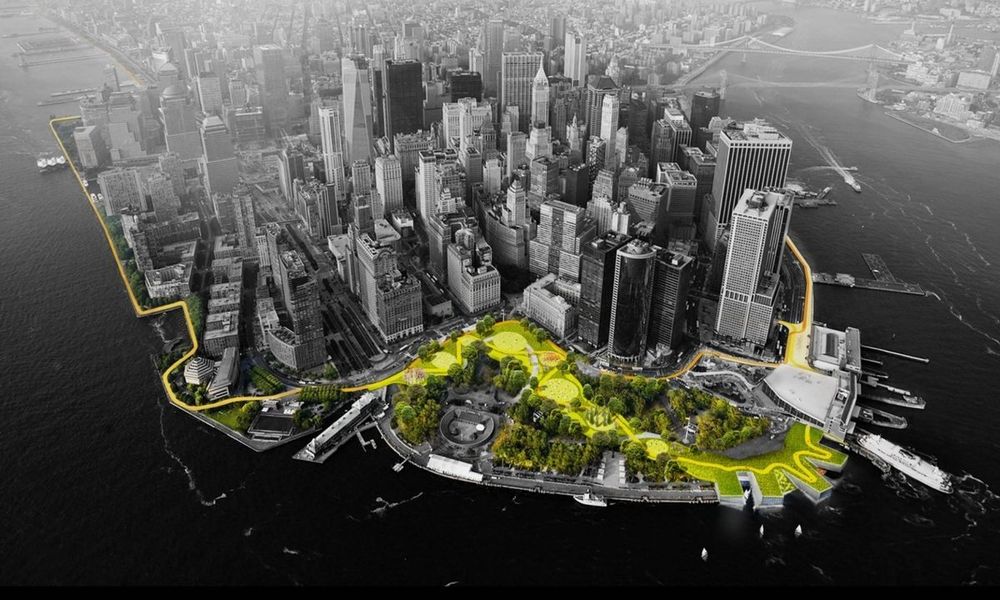
The more recent follow-up in the San Francisco Bay Area Challenge, Resilient by Design, which took a proactive view, not in response to a pulse or disaster event, but a more forward-thinking view on managing things like sea level rise, and focusing on social resilience. The community focus of RbD was interesting, with community partners involved in what’s billed as a “year-long collaborative design challenge… to develop innovative community-based solutions that will strengthen our region’s resilience to sea leel rise, severe storms, flooding and earthquakes.” The teams were diverse and interdisciplinary, and as mentioned, were fronted by landscape architecture firms, including SCAPE, Field Operations, Bionic, and Mithun to name a few.
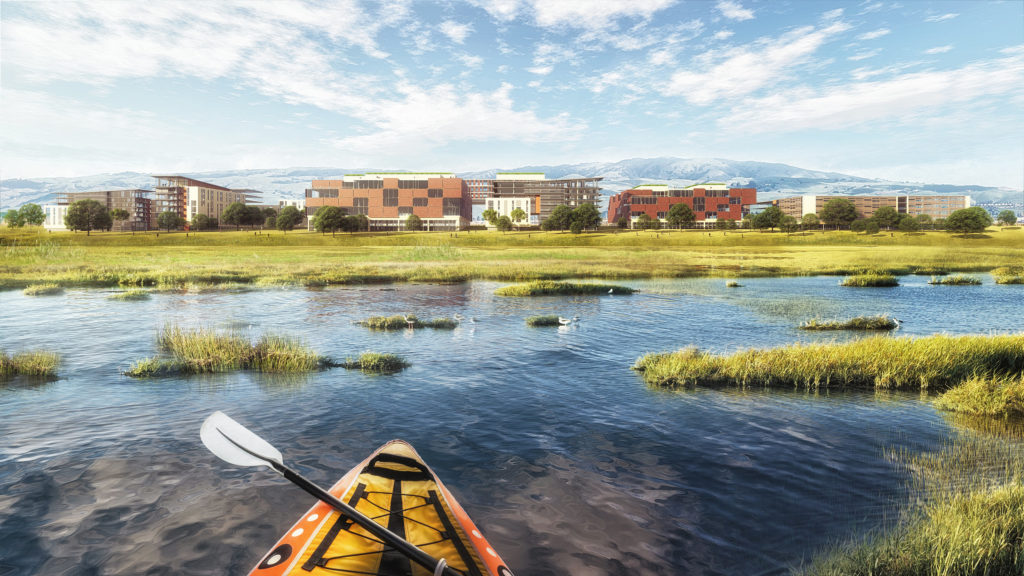
I’m going to delve into these in more detail later as there’s a lot to unpack in both in terms of content and process, but suffice it to say, whether you think the solutions are viable or not, both of these competitions opened up a new visibility for designer’s role in resilient design in urban areas. There are many other projects out there beyond these two high-profile endeavors, but these do show the potential and higher profile of design-focused, and specifically adaptation-minded projects.
Moves towards Mitigation
In contrast to the attention that has been focused on adaptation projects, there’s less work around the goals of mitigation in landscape architecture. It’s somewhat more advanced in architecture due to the amount of embodied carbon in buildings from concrete, steel, and other activities, so this provided more of a impetus for action. In landscape and sites, we’ve discussed the inherent benefits of landscape-based systems, there’s more discussion of proactive approaches, as more awareness and tools are developed. The most visible work in this area in landscape architecture, first introduced to me in this post from The Dirt, “Landscape Architects: Now is the Time for Climate Action“, discusses the work of Pamela Conrad at CMG Landscape Architecture, who is leading the charge in moving us beyond mere adaptation and talking about the potential for Climate Positive City Design.
An October 2018 post by Conrad in ASLA blog The Field, discusses a recent presentation from the Global Climate Action Summit, and gives a great primer on the process and tool being developed for designers to “work together to strive beyond neutrality, and bring about positive change to our climate.”
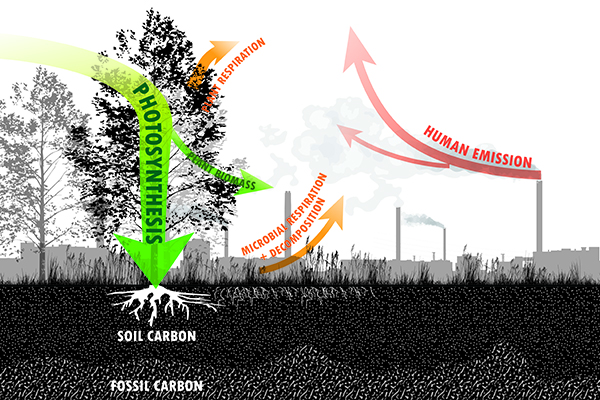
She also discussed the development of a calculator, a tool specifically aimed at “…understanding the carbon footprint of our projects and how to calculate and compare how much carbon those projects sequester over time. Architects have tools to measure carbon footprints and energy outputs for buildings and set goals to become net zero or carbon neutral through initiatives like the 2030 Challenge. But because landscape projects use far less energy over time, perhaps we could have different goals? And because we can sequester C02 through our sites, can we strive beyond being carbon neural, for a more ambitious goal of being climate positive? “
This also was expanded with a 2018 ASLA Conference presentation featuring Conrad along with Colleen Mercer Clarke representing CSLA/IFLA, Vaughn Rinner from ASLA and Martha Schwartz representing LAF, and discussions around the theme ‘Climate Action – Now!’. Looking for some info on that session, which I’m sure will link to some interesting ideas each of those organizations are up to, as I know ASLA has been developing resources around Climate Mitigation and Resilient Design, the CSLA has a great (and dense) series of Primers for Climate Change Adaptation, and the LAF has made Climate Change a big part of the New Landscape Declaration.

As to the tools, it sounds great and very exciting in theory, and it will be interesting to see how it works in action once beyond the ‘beta version’. I’ve done some preliminary work on carbon-neutrality in landscapes (as far back as 2008), using many of the tools available through Architecture 2030. At the time, the data and info was hard to find, difficult to translate, and thus came with many caveats, but it did show potential, even in urban landscapes for positive benefits to GHG emissions. It will be interesting to see how the tools have evolved and how they get represented in this tool.
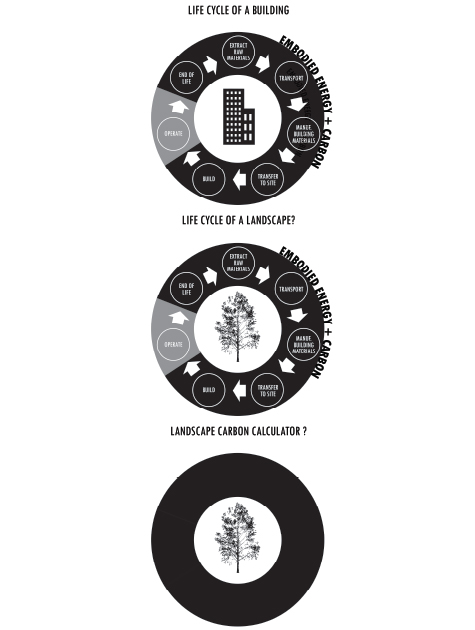
As mentioned in The Dirt , Conrad’s tool: ” measures sources of embodied emissions in landscape materials against the sequestration potential of vegetation on a site to calculate both the carbon footprint of a project and the amount of time it will take for sequestration to completely offset emissions. Past that point, the project will sequester additional atmospheric carbon dioxide, a condition Conrad calls being “climate positive.”
This builds on interesting resources that have been developed focusing on the carbon sequestration potential of urban forests, like iTree and the ecoSmart Landscapes Carbon and Energy Tool, which quantify many ecosystem services of trees and landscapes, including CO2 sequestration (more on this later). Conrad’s work leverages those resources, and directs them at landscape architecture specifics, which is existing. Also, I think it will be interesting if the project will be released widely (perhaps gaining financial support of organizations above), and how adaptable it is to different climate regions, and whether it will grow into a resource for the many or become merely a tool for a few. A strategy for this would be a fully open-source as a Git-hub type model that develops a base code, and then allows for tweaking, branching, and improvements by others.
Aligning the two Pathways
As I mentioned, this is a short introduction, but frames two significant areas of operation in the landscape architecture realm. There’s much more embedded in both concepts, and our skill-sets align well with adaptation in a variety of contexts both in implementation, and more broadly in policy as outlined in the recent ASLA Report: Smart Policies for a Changing Climate. As we will also see, there are so many interactions between mitigation and adaptation, it’s never either/or, and the goal is to maximize
In terms of mitigation, the very nature of our tools are one of the means to contribute. We do need awareness of our impacts in our materials choices and understanding of whats to lessen emissions (more to come on that), however the relative footprint of what we build is far less impactful that other disciplines, namely architecture and transportation. The building blocks of landscapes, namely trees, plants, and soils, outlines a major opportunity for landscape architecture, one communicated by Conrad above, as to the potential for us to participate more directly as agents of climate mitigation. This contribution is not just on doing less harm or slowing the rate of emissions growth, but on realizing regenerative potential for net positive strategies, helping to stem the tide of climate impacts and avoid catastrophic tipping points.
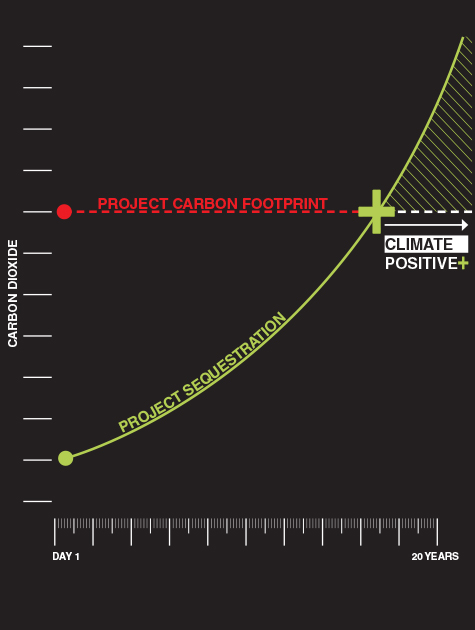
This mitigation potential allows us to create another dimension to our work beyond adaptation. It also means expanding the reach of landscape architecture into realms like ecological restoration, afforestation, In order to do so, we need to be actively engaged in the future research on mitigation potential for landscape systems, be proactive on measures and metrics on around reducing GHG emissions in our projects, and bridging some of the gaps between science and design, as mentioned in the NCA4:
“Interdisciplinary collaboration can play a critical role in addressing these knowledge gaps. Combining advances in scientific understanding of the climate system with scenarios to explore socioeconomic responses is expected to lead to an improved understanding of the coupled human-earth system that can better support effective adaptation and mitigation responses.”
Fourth National Climate Assessment – Chapter 29: Reducing Risks through Emissions Mitigation
At the end of the day, even if we stop emissions today, there will be won’t be able to Beyond mere functional agents in adaptation, the social-ecological-technical mix of our work, an
“The ability of adaptation to reduce severe climate impacts like these will ultimately depend less on scientific uncertainties and the ability to implement engineering solutions than on perceived loss of culture and identity, in particular identities associated with unique cultural heritage sites and a sense of place.”
Fourth National Climate Assessment – Chapter 28: Reducing Risks through Adaptation Actions
—
HEADER IMAGE: Public Sediment for Alameda Creek – From the Resilient by Design Bay Area Challenge – PUBLIC SEDIMENT is a multidisciplinary design team that views sediment as a core building block of resilience in San Francisco Bay. The team is led by SCAPE Landscape Architecture with Arcadis, the Dredge Research Collaborative, TS Studio, the UC Davis Department of Human Ecology and Design, Cy Keener, and the Architectural Ecologies Lab.
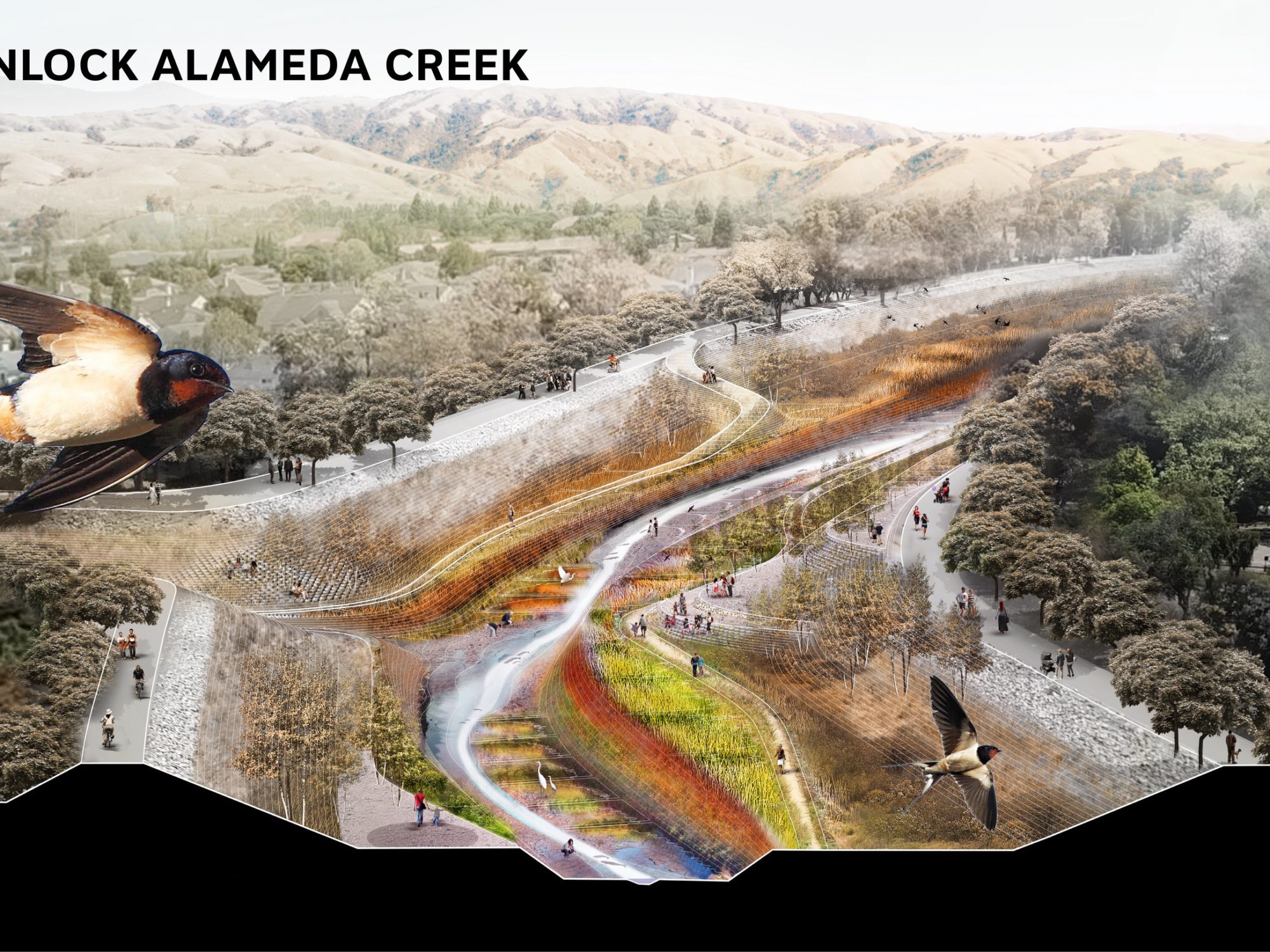
A resource I’ve found to be useful is Brian Stone’s City and the Coming Climate. See https://www.amazon.com/City-Coming-Climate-Change-Places/dp/1107602580. He uses the term ‘adaptive mitigation’: ‘climate management activities designed to reduce global greenhouse effect while producing regional benefits in the form of heat management, flood management, enhanced agricultural resilience’ etc.
Thanks for that – at first I was like nooo! not another term – but that does a really nice job of being consistent while expanding the notion to include those strategies that do both simultaneously. Will check out the book!